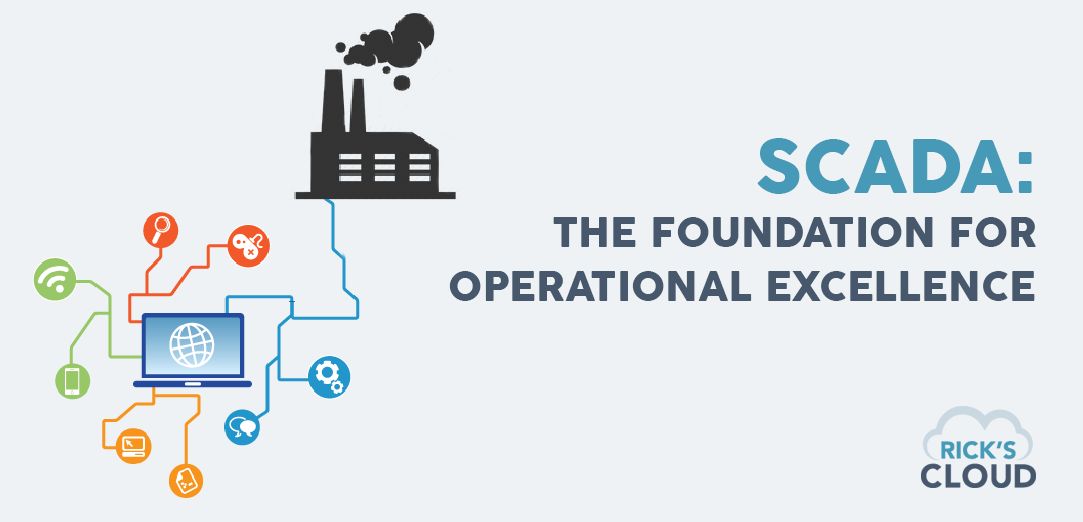
SCADA – the foundation for operational excellence
SCADA overview
SCADA (supervisory control and data acquisition) is a system seeking operational excellence that contains both software and hardware components and allows organizations from different industries to control processes, to monitor and gather information in real-time, to interact with various devices such as sensors or motors, and also record the events in a back-end database. It might seem simple, but a few decades ago the SCADA system was essential for the industrial companies, helping them to increase efficiency, to make data-driven decisions and to reduce the maintenance time.
When computers were first developed for industrial purposes in 1950, networks, as we know them today, didn’t even exist. The need to control the massive industrial activities determined computer science specialists to develop SCADA system, which became very popular in short time.
The basic SCADA architecture starts with PLCs (programmable logic controller) or RTUs (remote terminal units). Those two elements are, in fact, microcomputers that can communicate with various objects like factory machines, end devices, sensors, and then transmit the information gathered to the computers with SCADA software. The system allows organizations to display and analyze data faster and cheaper than before, with a focus on reaching operational excellence. For example, the system can notify the employers that one machine is showing high potential for errors. The operators could stop the device until the problem is solved and prevent further loss of products.
The modern SCADA systems are cloud-based, and that offers the possibility to implement even more complex algorithms to increase the accuracy of data collected.
Industries that benefit from SCADA
SCADA software is used by industrial companies, from the public to private sector, to control and maintain their efficiency, while making data-driven decisions. The system could be implemented in various industries because it can be adapt to answer specific requirements. Here are few sectors that use SCADA: manufacturing, food and beverage, energy, oil and gas, recycling, transportation, and many more. Even if we don’t know, we can find SCADA systems almost everywhere, from the system that maintain the refrigerators working at a hypermarket, to the system ensuring the safety at a refinery, and the list could continue. An efficient software was proven to be very helpful for reducing the costs and time.
SQL and NoSQL in SCADA adoption
There are many options for the database used to collect SCADA data – ranging from highly scalable cloud-based SQL databases such as AWS RDS Aurora or NoSQL databases such as MongoDB. Depending on data volume and frequency and analytical requirements, a data lake approach for data ingestion with a back-end data warehouse (often column based) is a common architecture.
Optimizing Performance with SCADA
While many companies still use manual labor to perform adjustments and measurements, these activities can easily be replaced with an automated system such as SCADA. By using the technology the labor cost can be cut down, but more importantly, the system could minimize errors. SCADA can provide numerous facilities to prevent tragic events from happening by showing exactly where the problem is. Technology might seem to take over the people’s jobs, but it is only taking over the activities that could be automated. In this way, the company could use its employees to create new strategies and to solve problems that SCADA system can’t.
SCADA security
Originally, SCADA systems were created for one specific environment considering security requirements. When they have been first implemented there were few external security risks. But as the time passed and massive cyber-attacks almost destroyed businesses, IT companies started to design security systems that could be added to the SCADA system.
Today we have various standards required for a secure SCADA platform to be operated by its users. If any of these procedures is not practiced correctly, the system could block the access and notify the administrator. Moreover, SCADA systems could use backup options and other security requirements such as isolating the system from any Internet connection.

I hope this article provided you with the necessary information to understand what SCADA system is and why it is essential in reaching operational excellence. This is another example of technology that improves the way companies work, and also the way of preventing errors that could impact the daily life of people.
If you have questions, be sure to leave a comment!




